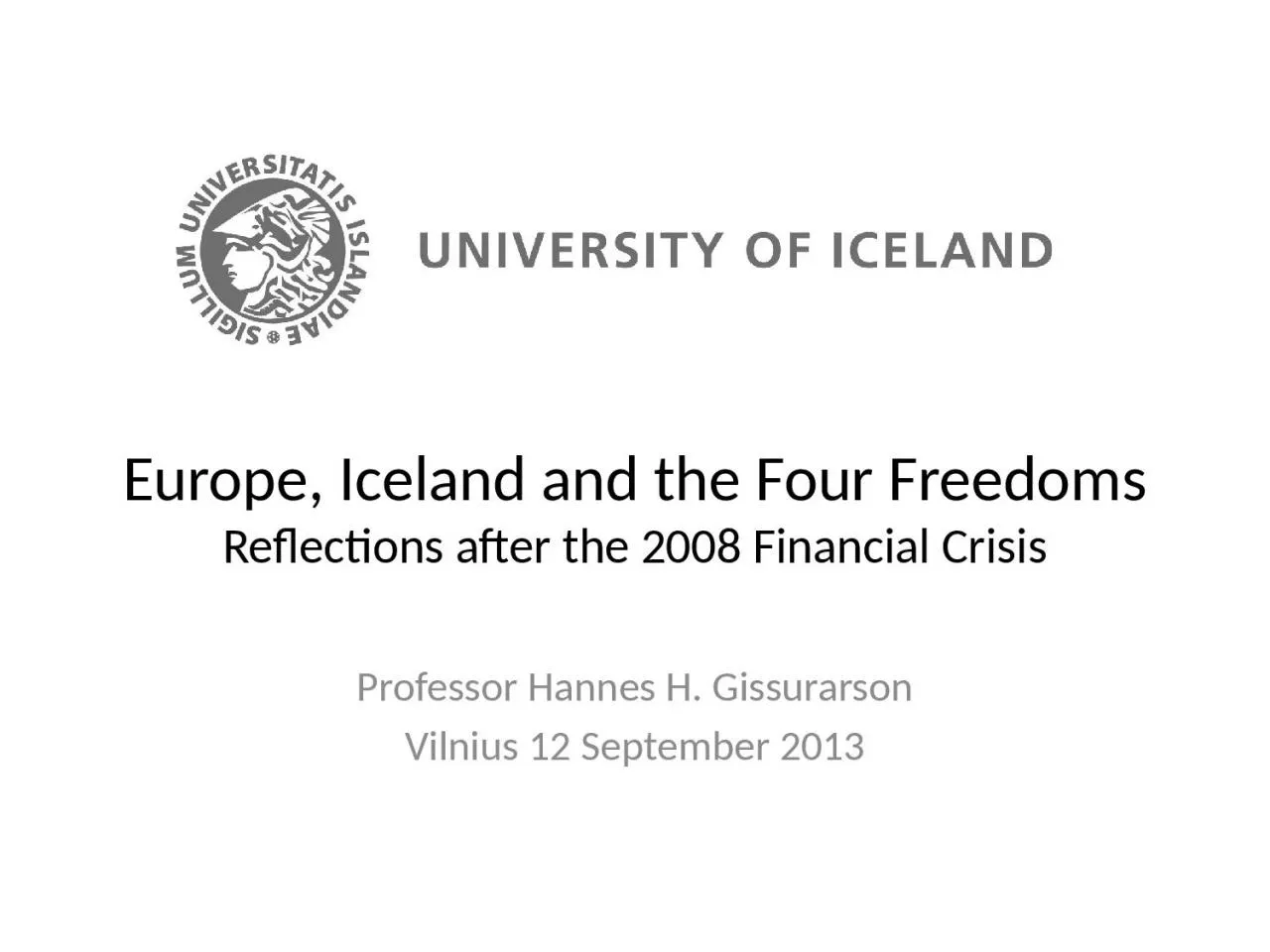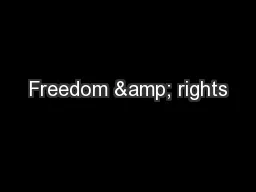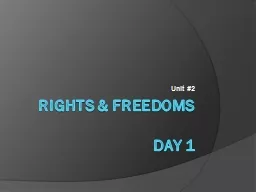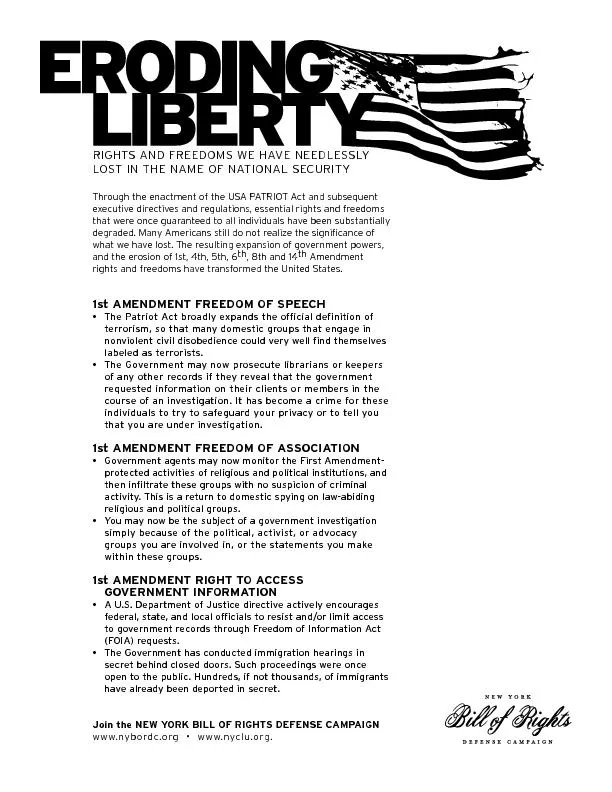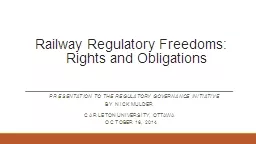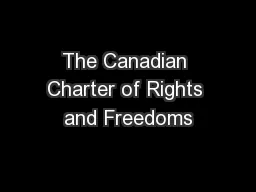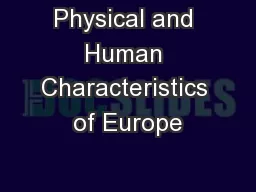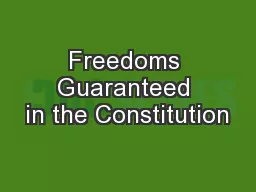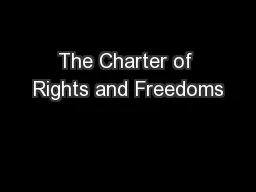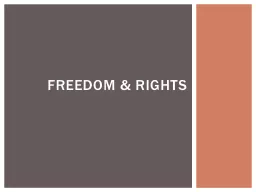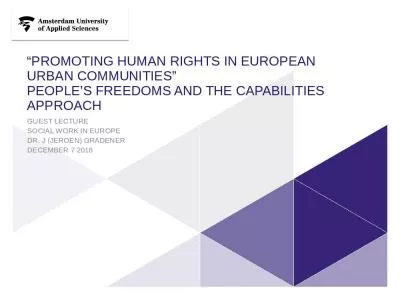PPT-Europe, Iceland and the Four Freedoms
Author : alyssa | Published Date : 2022-06-28
Reflections after the 2008 Financial Crisis Professor Hannes H Gissurarson Vilnius 12 September 2013 Topics to Be Discussed The Big News in beginning of 21 st Century
Presentation Embed Code
Download Presentation
Download Presentation The PPT/PDF document "Europe, Iceland and the Four Freedoms" is the property of its rightful owner. Permission is granted to download and print the materials on this website for personal, non-commercial use only, and to display it on your personal computer provided you do not modify the materials and that you retain all copyright notices contained in the materials. By downloading content from our website, you accept the terms of this agreement.
Europe, Iceland and the Four Freedoms: Transcript
Download Rules Of Document
"Europe, Iceland and the Four Freedoms"The content belongs to its owner. You may download and print it for personal use, without modification, and keep all copyright notices. By downloading, you agree to these terms.
Related Documents

